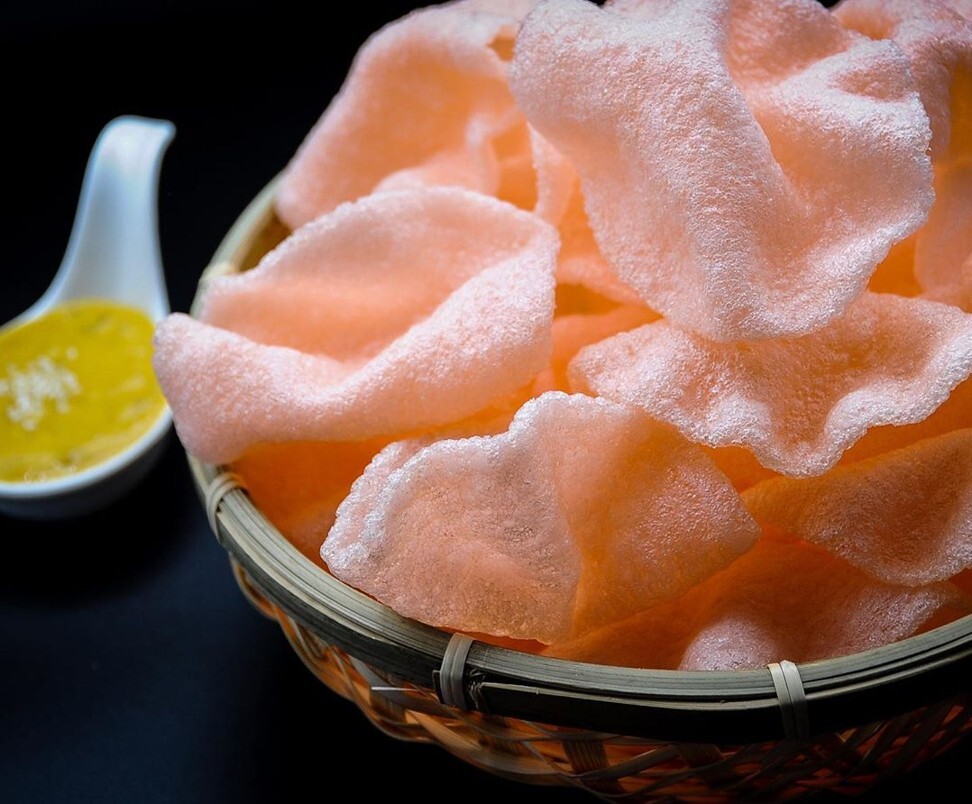Chinese restaurant favourites that aren’t from China – fortune cookies are Japanese, prawn crackers Indonesian, what about egg rolls, chop suey and General Tso’s Chicken?

Prawn crackers

Although prawn crackers often accompany a Chinese meal, they originate from Indonesia and are popular throughout Southeast Asia. Made by mixing prawns with tapioca flour and water, then sun-dried and fried, Chinese restaurants often make them lighter and non-spicy, and sometimes use pink food colouring.
Egg rolls
![Egg rolls at What to Eat, a Taiwanese restaurant at Carfield Commercial Building, 77 Wyndham Street, Central, Hong Kong on November 09, 2018. 09NOV18 [27NOVEMBER2018 -100] SCMP: MARTIN CHOI](https://cdn.i-scmp.com/sites/default/files/d8/images/methode/2020/05/19/72b04830-95c9-11ea-ae0d-0e69ba128e68_972x_101959.JPG)
These deep-fried appetisers are often stuffed with shredded cabbage and chopped pork and wrapped in a thick wheat flour skin. They taste good dipped in plum sauce and are a Chinese staple in the US. Although they are closely related to spring rolls found throughout China, you will not find egg rolls in China itself.
Their origins are unclear. In 1917 a recipe appeared in the US for vegetables wrapped in an egg omelette, hence the name egg roll. A modern version using wheat wraps probably came from a Chinese restaurant in New York City in the early 1930s, according to Andrew Coe’s book Chop Suey: A Cultural History of Chinese Food in the United States. Two New York City chefs claim to have invented the dish – chef Lung Fong of Lung Fong restaurant and Henry Low of Port Arthur restaurant. The fillings back then included bamboo shoots, roast pork, shrimp, scallions, water chestnut and seasoning.
Fortune cookies

Even though they are staples at Chinese restaurants across the US, and beyond, fortune cookies do not come from China. The first fortune cookie that looks like the modern-day equivalent was made in Kyoto, Japan. Fortune cookies were a Japanese tradition at temples where fortunes were told. These cookies were bigger and made from darker dough which contained sesame and miso rather than vanilla and butter, which is the case today. The paper fortune was placed in the bend of the cookie instead of inside it. Makoto Hagiwara of San Francisco’s Japanese Tea Garden, in Golden Gate Park, was said to be the first person in the US to serve the modern-day version in 1890.
General Tso’s chicken

The US also lays claim to this dish, and there are different versions of how it was created. One story goes that in 1973 Hunan-born chef Peng Chang-Kuei moved to New York from Taiwan where he had been banquet chef to the Nationalist government. Peng created new dishes and modified traditional ones for his New York restaurant. General Tso’s chicken was one such dish, consisting of battered chicken with a sauce featuring spring onions, garlic, chillies, orange zest, sugar, chicken broth, vinegar, soy sauce and sesame oil. The dish was a success in the US and other Hunan chefs in the city started making it. However, when Peng opened a restaurant in Hunan in 1990, Chinese diners felt that General Tso’s chicken was too sweet and his restaurant closed.
New York’s Shun Lee Palace also claims to have been the first restaurant to serve the dish, which they said was created by Chinese immigrant T.T. Wang in 1972. The dispute forms the basis for a documentary called The Search for General Tso, that premiered at the 2014 Tribeca Film Festival.
![Handout image shows Yue's fried chicken with orange and yellow cayenne chilli peppers in clay pot [16OCTOBER2017 TABLE TALK FEATURES]](https://cdn.i-scmp.com/sites/default/files/d8/images/methode/2020/05/19/c80186a0-95c9-11ea-ae0d-0e69ba128e68_972x_101959.JPG)
Orange chicken
Although most people think this dish originates from North America as a variation of General Tso’s chicken, orange chicken comes from Hunan province in China. The Hunan version is made with an orange peel while the western version has no peel and is sweeter. Chef Andy Kao claims to have developed the American dish in Hawaii in 1987.
Chop suey
It is commonly believed to be an American-Chinese dish, created by Chinese immigrants during the California Gold Rush in the mid 19th century. There is one story of a Chinese chef in 1860s San Francisco serving leftovers to drunken miners. When asked what the dish was called, he replied “chopped siu”. While touring the US in 1903, Guangdong-born historian Liang Qichao provided another account, writing “chop suey is popularly served by Chinese restaurants but local Chinese people do not eat because the cooking technique is really awful”. Who knows what the truth is.
E. N Anderson, a Chinese food scholar and anthropologist, has traced the dish back to Taishan in Guangdong province, which unsurprisingly was home to many of those who emigrated to the US.
Chop suey consists of meat – often chicken, fish, beef, shrimp or pork – with eggs, vegetables and bean sprouts bound by a thick starchy sauce. It is often served with rice and if you add crispy noodles, it can become chow mein. The original dish offered a way to use up leftovers.
Where are Singapore noodles from? How are century eggs made? Are French fries improperly named? And what’s the final verdict on where tikka masala was created? With the Origins series, STYLE delves into the often surprising beginnings of iconic dishes or foods, how they’ve evolved over time and the many ways they’re enjoyed today.
Want more stories like this? Sign up here. Follow STYLE on Facebook, Instagram, YouTube and Twitter .
Help us understand what you are interested in so that we can improve SCMP and provide a better experience for you. We would like to invite you to take this five-minute survey on how you engage with SCMP and the news.

Served in restaurants all over the world, are these staple dishes really Chinese, or were they cooked up in the US to suit Western tastes?